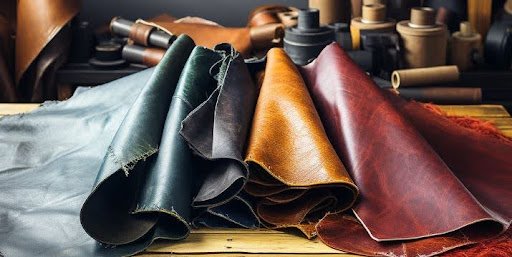In recent times, there has been a notable shift in The Leather Fashion industry towards sustainability, as consumers have become more conscious of buying apparel and accessories that are made ethically and environmentally. Because people are becoming more conscious of environmental issues, there is a growing demand for greener leather alternatives. This has made sustainable leather an achievable and realistic alternative, and environmentally friendly raw materials and production techniques have become the go-to option for forward-thinking businesses and designers. We will talk about eco-friendly leathers, their advantages, and the growth of sustainable fashion in this blog article to help us build a more ecologically friendly future.
Comprehending Sustainable Leather
Sustainable leather is a product that takes account of the environment and ethical considerations. Sustainable leather production aims at reducing its negative impact on the environment and improving animal welfare, as opposed to conventional forms of leather which often involve the use of dangerous chemicals, excessive water usage, or deforestation. This could mean executing energy-productive reusing methods the entire way through the store network, utilizing practical and natural materials, and ensuring work regulations are followed.
The Advantages of Sustainable Leather

It is possible to enjoy the timeless appeal of leather, while also promoting ethics and environmental good practices when you choose a Sustainable Men’s Leather Jacket. In addition, sustainable leather tends to be of high quality, ensuring that your men’s leather jacket is durable and long-lasting, which is a smart investment for your wardrobe and the planet.
Impact on the Environment
The way that supportable leather has less of a natural effect than conventional leather creation is one of its principal benefits. Practical leather makers focus on the utilization of eco-friendly materials and creation strategies to limit contamination, safeguard normal assets, and lower ozone-harming substance outflows. This effectively diminishes the natural harm related to conventional leather creation, making it a more reasonable option for eco-cognizant customers.
Animal Welfare
Sustainable leather production lays a significant emphasis on animal welfare and ethical treatment throughout the supply chain. This entails obtaining leather from farms that practice ethical farming practices and guaranteeing that animals are treated humanely throughout their lives. Sustainable leather firms give consumers peace of mind that their products are made with compassion and respect for animal welfare by placing a high priority on animal welfare.
Preservation of Resources
Resource-efficient techniques are essential to sustainable leather production to reduce waste and preserve natural resources. This can involve cutting energy use during the production process, maximizing the use of water, and employing recycled materials. Sustainable leather brands contribute to the preservation of biodiversity and the protection of ecosystems for future generations by reducing waste production and resource use.
Technological Innovation
In the fashion area, creativity and technological enhancements have been started by the rise of practical leather. From lab-developed leather substitutes to bio-based materials, analysts and managers are looking for better ways to deliver leather reliably without sacrificing performance or quality. These developments can lead to a complete change in the fashion industry and an alternative future that is better for the environment.
Customer Duration
Demand for eco-friendly leather and other sustainable fashion solutions is rising as consumers become more cognizant of the ethical and environmental consequences of their purchases. Brands may capitalize on this growing market and draw in eco-aware customers who are prepared to pay more for products made responsibly by providing sustainable leather products. This gives firms the chance to stand out in a crowded market and cultivate a following of environmentally conscientious customers.
The Growth of Eco-Friendly Clothing
The rise of economical design is characteristic of a more extensive development towards scrupulous and responsible purchaser propensities. In everything from leather footwear to clothing and accessories, customers are looking for environmentally friendly options that match their values and beliefs. Accordingly, the maintainable design development has built up forward movement and more firms are swearing to help supportability-related ventures and points.
Driving how toward a more moral and environmentally cognizant design industry are supportable leather brands. These organizations are laying out new benchmarks for responsibility, straightforwardness, and ecological stewardship by placing a high need on supportability all through the production network. From obtaining materials capable of diminishing waste and discharges, reasonable leather producers are changing how leather is fabricated and utilized.
Conclusion
Eco-conscious leather gives a promising step towards a more supportable and moral design area. Sustainable leather makers are demonstrating that style can be elegant and practical simultaneously by accentuating creature care, natural obligation, and asset protection. Developing purchaser mindfulness will presumably prompt an ascent in the interest for eco-accommodating style choices, which will prod further development and progression in work to make a greener future.





